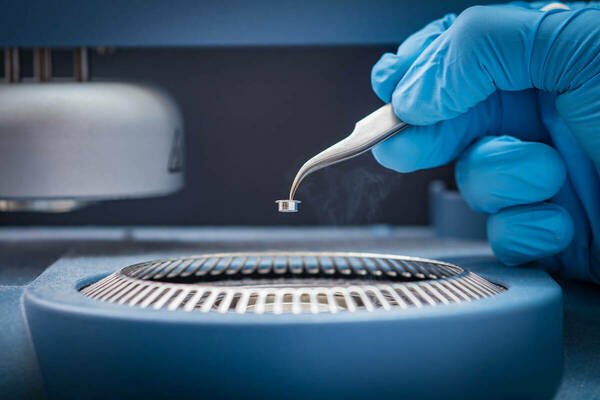
Innovative research includes efforts to treat Parkinson’s disease, understand heart disease and strokes, tackle bacterial drug resistance

Advanced Diagnostics & Therapeutics (AD&T), a strategic research initiative at the University of Notre Dame, has announced the recipients of its Discovery Fund awards for 2016. Each year, these awards are given to scientists and engineers who propose novel technologies that can improve human and environmental health.
“We fund researchers who have exciting, sometimes risky ideas but need assistance to kick-start their investigations and collect preliminary data,” explained Paul Bohn, AD&T’s director. “There’s also a focus on selecting projects that have a recognizable path to becoming high-impact, marketable products.”
“Previous projects supported by AD&T include a new 3D tumor imaging platform for pathologists and an process for fabricating nanoparticles for targeted drug discovery, which has already been licensed” added Aaron Timperman, associate director for research. “This year’s projects show the same exciting promise.”
Project teams are led by Notre Dame faculty and, this year, include collaborators at the University of Pennsylvania’s Perelman School of Medicine, Florida International University’s Wertheim School of Medicine, and the Feinstein Institute for Medical Research.
The 2016 AD&T Discovery Fund awardees are:
Magnetoelectric nanoparticles (MENs) for minimally-invasive deep brain stimulation in a Parkinsonian mouse model
Over the past decade, a great deal of research has looked at using non-invasive brain stimulation as a lasting treatment for Parkinson’s disease, but the technique has several drawbacks. The intent of this study is to assess the feasibility of injecting magnetoelectric nanoparticles (MENs) as a neurostimulatory enhancement technology. It is hoped that decoding the information from neuromodulation signals generated by MENs in Parkinson’s disease models will increase our fundamental understanding of the treatment and prevention of neurodegenerative disorders. Principal investigators: Tiffanie Stewart, Gary Bernstein, Sakhrat Khizroev, Mayland Chang, Chad Bouton, Theodoros Zanos
3D non-destructive optical imaging of patient-derived thrombi
Excessive clotting under disease conditions is deadly; it contributes to coronary heart disease, the number one killer in developed countries, and stroke, the second foremost cause of disability. Though they are three-dimensional, the structures of blood clots (or thrombi, when they form in veins) are currently pieced together from two-dimensional images, which limits the ability of researchers and physicians to see the interior of clots and understand them as a whole. The purpose of this project is to render blood clots optically transparent while maintaining their structure. Such clot transparency allows the scientists and physicians to obtain 3D images of clots that have fluorescently labeled clot components at cellular resolution. Principal investigators: Jeremiah Zartman, John Weisel, Holly Goodson, Mark Alber
An organ-on-a-chip with real-time miRNA monitoring
This interdisciplinary project brings together expertise from tissue engineering, stem cell research, nanobiosensors, and microfluidics to facilitate research on acute myocardial infarction (MI), a leading cause of morbidity and mortality worldwide. Researchers have discovered circulating microRNA (miRNA) are potential biomarkers for early assessment of MI and other cardiovascular diseases, but animal models often fail to predict responses in humans and human subjects do not allow for the precise control needed to study biomarker expression. The aim of this research is to design a physiologically relevant on-chip cardiac model with a real time biosensor to monitor fluctuations in miRNA biomarkers in human cardiac cells during distressed states. Not only will such a chip aid in cardiac research, it has the potential to provide better information about fluctuations among different populations and allow for better personalized diagnostics. Principal investigators: Pinar Zorlutuna, Satyajyoti Senapati, Hsueh-Chia Chang
Development of a Tunable Attribute Precision Screening (TAPS) antimicrobial assessment platform
In light of the growing global problem of bacterial drug resistance, there is a clear need to develop treatments against pathogenic bacteria in a more targeted manner to improve outcomes and limit side-effects. But current strategies used to probe for antibiotic activity are highly inefficient at screening for compounds that limit bacterial function under relevant pathogenic conditions. In answer, this project aims to develop further a patent-pending Tunable Attribute Precision Screening (TAPS) antimicrobial assessment platform for evaluating antimicrobial activity of chemical libraries under conditions that are actually relevant to the bacterial infection of interest. The approach will include development of a new microfluidic system that can assess multiple scenarios by creating a vast number of well-defined growth environments, which will be used to research bacterial behavior and antimicrobial action with precise detail. Principal investigators: Joshua Shrout, Shaun Lee, Aaron Timperman
For more information about the Notre Dame research supported by AD&T’s Discovery Fund, please contact the listed principal investigators, or Arnie Phifer at (574) 631-3057 or aphifer@nd.edu.
The University of Notre Dame is a private research and teaching university inspired by its Catholic mission. Notre Dame faculty, students, and staff engage in research, scholarship, education, and creative endeavor in order to advance human understanding and do good in the world.
Originally published by Arnie Phifer at advanceddiagnostics.nd.edu on August 29, 2016.